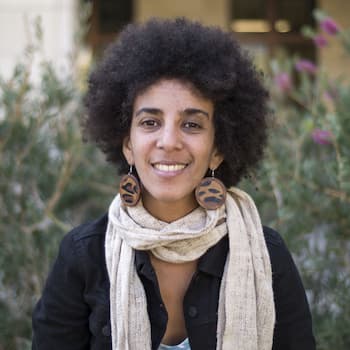Timnit Gebru Bio | Wiki
Timnit Gebru is a noted Eritrean Ethiopian-born computer scientist. She mostly works on algorithmic bias and data mining. She is a co-founder of Black in AI and an advocate for diversity in technology. Gebru was the center of a public controversy stemming from her abrupt and contentious departure from Google as technical co-lead of the Ethical Artificial Intelligence Team in December 2020. In addition, she is the founder of the Distributed Artificial Intelligence Research Institute (DAIR).
Timnit Gebru Age
She was born in Addis Ababa, Ethiopia on May 13, 1983. Gebru is 40 years old and celebrates her birthday every year on May 13.
Timnit Gebru Height
She is a woman of average stature. Gebru stands at a height of 5 ft 6 in ( approx. 1.68m ).
Timnit Gebru Family
She was born in Addis Ababa, Ethiopia to Eritrean parents. Gebru holds Eritrean nationality. Her mother is an economist while her father was an electrical engineer with a PhD who died when she was just five. She fled to Ethiopia during the Eritrean–Ethiopian War after some of her family was deported to Eritrea and compelled to fight in the war when she was 15. She briefly lived in Ireland after she was initially denied a U.S. visa but eventually received political asylum in the U.S. setting in Somerville, Massachusetts.

Timnit Gebru Husband
She has not shared any details regarding her marital status as well as whether she is currently dating someone. Thus, there are no clear details regarding her marital life.
Timnit Gebru Education
She attended high school where she immediately started to experience racially based discrimination. In 2001, she joined Stanford University where she earned her Bachelor of Science and Master of Science degrees in electrical engineering. In 2017, she had her PhD in computer vision where she was advised during her PhD program by Fei-Fei Li.
Timnit Gebru Dair
She is the founder of the Distributed Artificial Intelligence Research Institute (DAIR) founded on December 2, 2021. The institute is set to document the effect of artificial intelligence on marginalized groups with a main focus on Africa and African immigrants in the US.
Timnit Gebru Google | Google Scholar | Google Ai
She joined Google in 2018 and co-led a team on the ethics of artificial intelligence with Margaret Mitchell. Gebru studied the implications of AI looking to improve the ability of technology to do social good. She left Google after higher Google managers asked her to either withdraw the as-yet-unpublished paper In December 2020 or remove the names of all the Google employees from that paper.
After her exit, Sundar Pichai, CEO of Alphabet which is Google’s parent publicly apologized on Twitter without clarifying whether Gebru was terminated or resigned.
Timnit Gebru Papers
In December 2020, she sent a six-page mail to an internal collaboration list where she described how she was summoned to a meeting at short notice. In the meeting, she was asked to withdraw the paper and she requested to know the names and reasons of everyone who made that decision on a research paper, “On the Dangers of Stochastic Parrots: Can Language Models Be Too Big?” The paper covered the risks of very large language models, regarding their environmental and financial costs.
Timnit Gebru Salary At Google | Salary
She worked at Google where she co-led a team on the ethics of artificial intelligence with Margaret Mitchell earning $130,000. However, Google agreed to pay more than $3.8 million to settle Labor.
Timnit Gebru Net Worth
Gebru is a famous Eritrean Ethiopian-born computer scientist whose wealth is from working at Google, Microsoft, Apple, and now on Independent research organizations. Her net worth is $12 Million.
Where Is Timnit Gebru Working Now
She founded Dair, the Distributed AI Research Institute, to which she now devotes her working time after she left Google.
How Old Is Timnit Gebru
Gebru is 40 years old born in Addis Ababa, Ethiopia on May 13, 1983.
What Was Timnit Gebru’s Paper About
She was an AI researcher at Microsoft, where she co-authored a paper called Gender Shades in 2017. The paper demonstrated how facial-recognition systems developed by IBM and Microsoft were almost perfect at detecting images of white people, but not people with darker skin, particularly Black women.
Gebru’s Social Media Account
Twitter – @timnitGebru